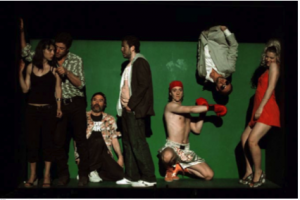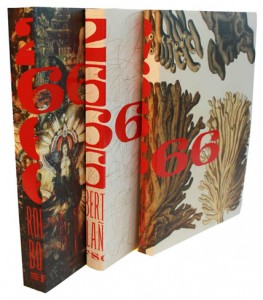This is old news in Spain, but news to me. In November 2007, Teatre Lliure in Barcelona presented a five-hour theatrical adaptation of Roberto Bolaño’s masterwork, 2666.
This video shows a few brief clips of the production (complete with a blood-covered corpse in the desert). IYI, Liz Norton is played by Chantal Aimée and Rosa Amalfitano is played by Cristina Brondo. Directed by Alex Rigola, the play is described as “an inquiry about the stark human wickedness between humor and horror.” There is also an impressive PDF dossier (in English) that includes press clippings, reviews, photos, and interviews with the director.
how did this project come about?
I really wanted to tell a new, contemporary story, and my fascination for Bolaño’s work, and in particular for this novel, pushed me to do it, because it allows you to do a lot of stage-work. A play has a life of its own, it’s not really the novel any more, the materials are very different. The type of poetry you can produce in a novel is completely different from the poetry of the stage. In an adaptation you start with one material, one set of contents and an underlying story, but the way of telling it is very different. I believe the project makes sense because the story is only relatively well-known. If it was a novel that absolutely everybody had read, then I would have to think again, but very few people have actually read it, amongst other things because its sheer size is off-putting.
Now I just need to build a time machine so that I can go back to 2007, fly to Barcelona, and learn Spanish enough to enjoy this.





